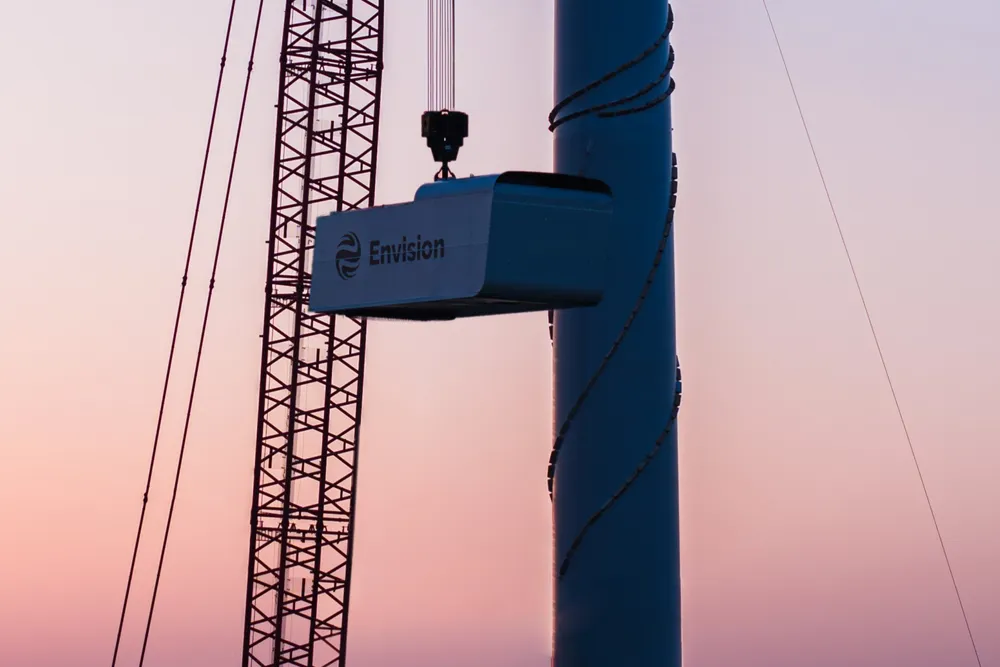Envision lifts lid on tech revolution that will allow it to conquer new markets
Automation and modularisation technologies key to Chinese wind turbine giant’s global march, says vice president

Envision is revolutionising how wind farms can be installed and monitored so it can push into new horizons such as Africa and Latin America, says one of its vice presidents, who also weighs in on the turbine ‘arms race’ between suppliers.
These construction difficulties, which he said can occur in Africa, Latin America, parts of Europe and Australia, come as there is a lack of experienced personnel to handle such projects in these regions.
To overcome the challenges this brings, Lou said Envision is working hard on levelling up its capabilities in automation and modularisation when it comes to turbine manufacturing and O&M.
On automation, Lou said that Envision is working on developing production lines for a swathe of turbine components, including converters, generators and blades.
The fundamental shift that Envision is working towards, he said, is “trying to change EPC to EPA… engineering, procurement, and assembly.”
That will entail producing modularised components that can be assembled on site, he said.
A key components Envision in this regard is foundations, he said. Envision is working towards modularising these, which would allow it to produce them centrally and ship them out to regions such as Africa and Latin America, he said, while stressing that there will be an extensive testing and validation process in China first.
Envision is also working on automating the lifting process for turbine towers.
These innovations in manufacturing and installation technology are crucial to allowing Envision to install turbines in regions where it would otherwise be impossible, said Lou.
Envision working on robot technology for automated O&M
Envision is also working on developing systems for automatic operations and maintenance, he said, as more wind farms will be in remote, inhospitable regions, where you “cannot have people, like the desert.”
Envision is therefore “utilising robots” to assist with “automatic operation and maintenance capabilities” for wind farms located far from population centres.
Lou stressed that industry cannot just focus on the O&M itself when considering automation, continuing that manufacturers need to develop products that allow for such automation to occur.
For example, he said that “totally different product principles” are needed to design components that are well suited for inspection by robots.
“The wind turbine needs to be easy for robots to run”.
Turbine arms race: 'I always said, let's slow down'
Chinese manufacturing giants have been at the forefront of what has been dubbed as an industry ‘arms race’ to build ever bigger and more powerful wind turbines.
Chinese wind turbines have been “growing very fast” in the last few years, said Lou. “The power is becoming bigger and bigger and the blades are becoming longer and longer”.
Lou said he believes that 10MW onshore wind turbines will become “mainstream” in the next few years. This will be necessary, he said, because sites with the best wind resource will have been snapped up already, forcing developers to less ideal locations.
Offshore, he believes that in China turbines in the 16-18MW range will be in “mass production” in the next three to five years. In Europe, he said it will remain in the 15-16MW range on account of the higher wind speeds available in the North Sea.
Many Chinese manufacturers are now developing offshore wind turbine prototypes of 25MW or even 26MW. Envision’s Model Z offshore wind platform has a comparatively modest 14-18MW range.
Lou said that while more powerful wind turbines look good “on paper”, Envision is more focused on the reliability, quality and efficiency of its turbines than their size.
Lou recalled that, two years ago when he took leadership of Envision’s wind turbine division, “I always said, ‘Let's slow down the speed.’”
The industry “needs a well-organised testing and validation process so that our product is suitable for long-term investment," said Lou.
A “healthy industry” needs to be able to “stay at one level,” he said, so that its various players can see a “return on investment”.
“We will not run too fast.”
(Copyright)